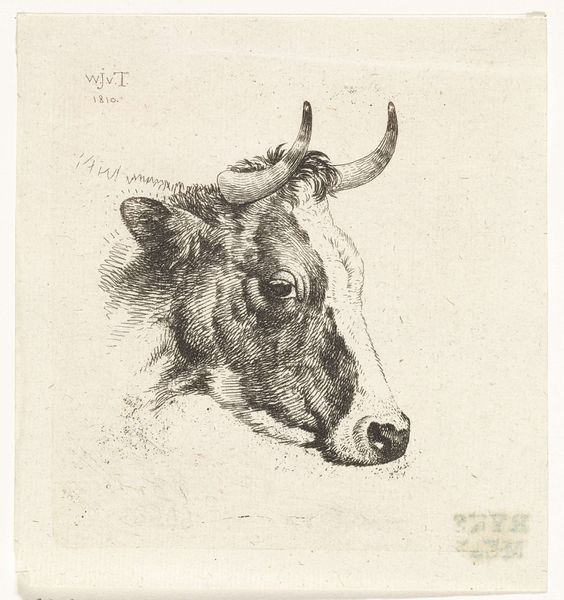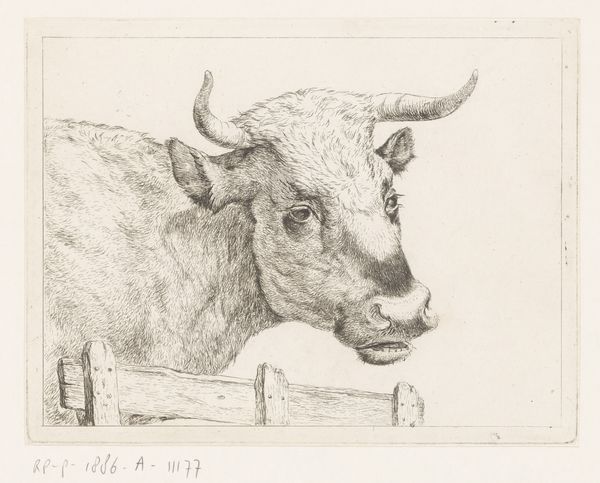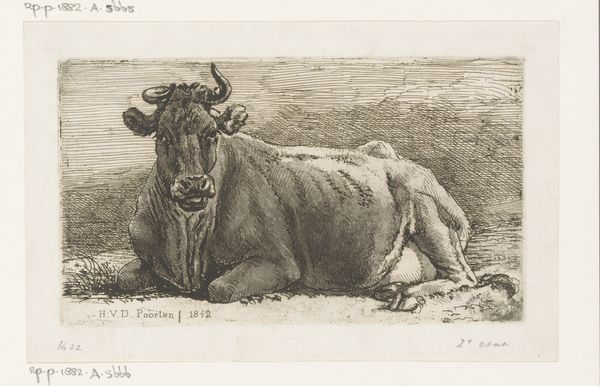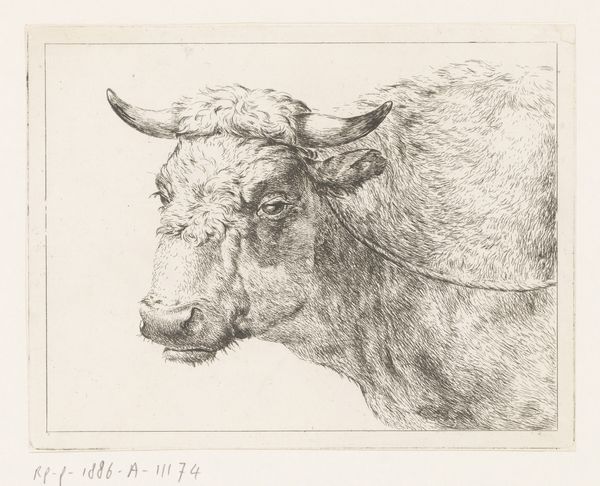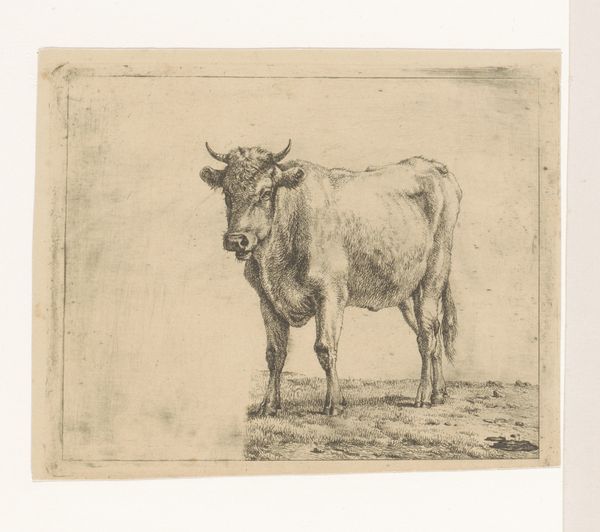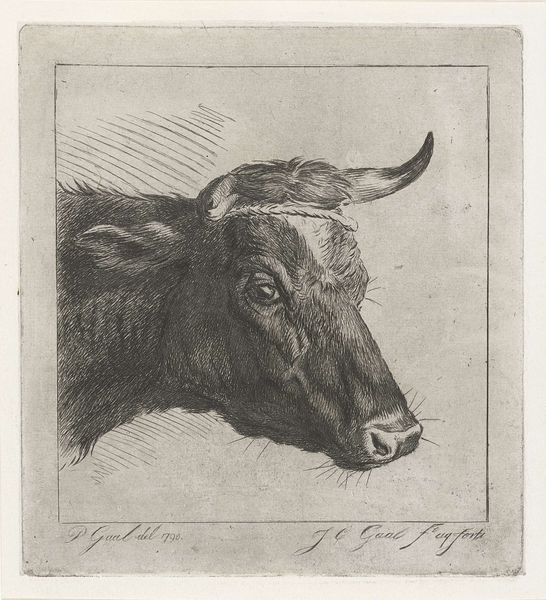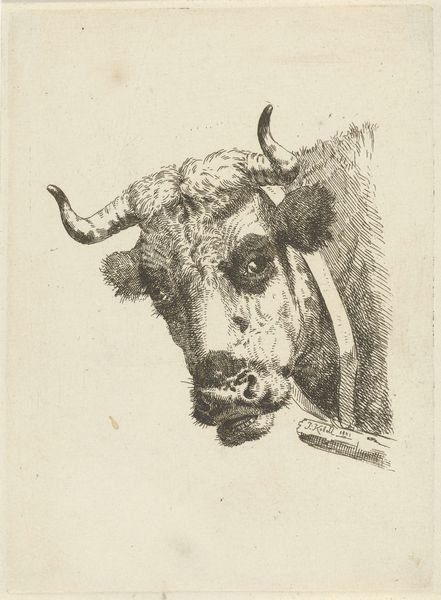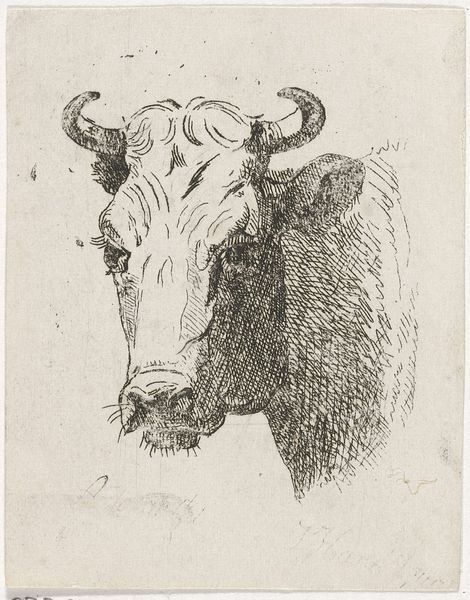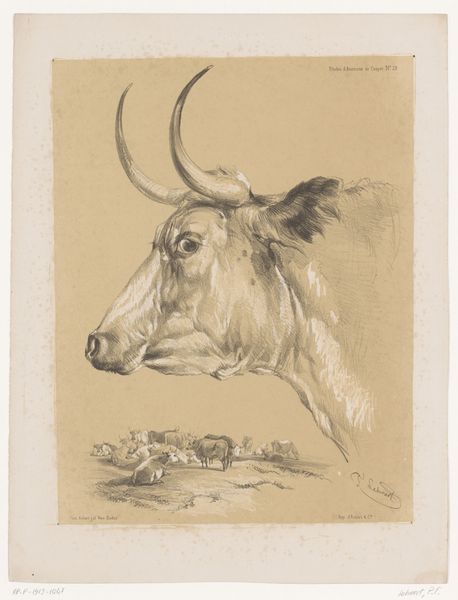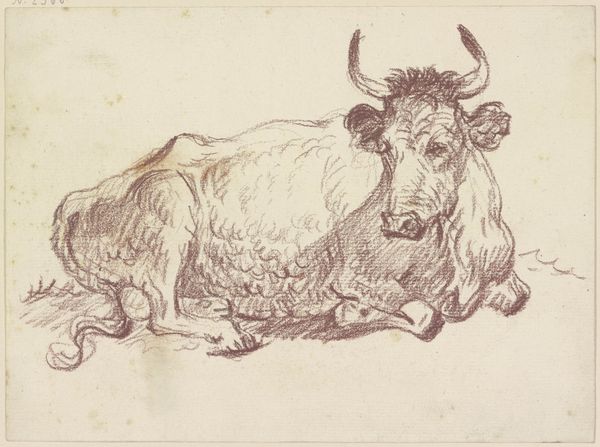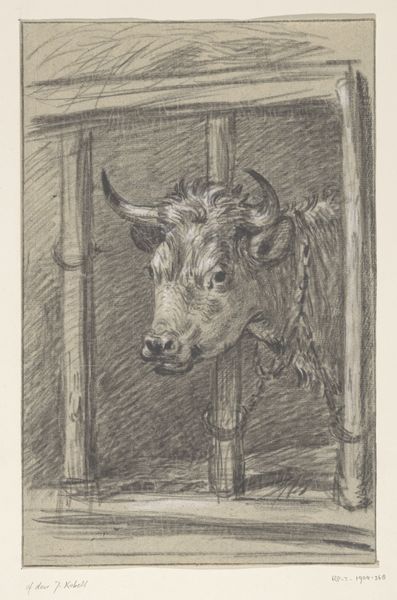
Dimensions: height 104 mm, width 126 mm
Copyright: Rijks Museum: Open Domain
This print, "Koeienkop boven een schutting," or "Cow's Head over a Fence," was made by Ernst Willem Jan Bagelaar, probably in the late 18th or early 19th century. He used the etching process, where lines are bitten into a metal plate with acid, then inked and printed. What makes etching so interesting is how it democratized image-making. Unlike painting, which required expensive materials and extensive training, etching allowed for relatively easy reproduction. Bagelaar’s skill with the etching needle is evident in the fine lines and subtle shading that give the cow’s head its lifelike quality. The texture of the animal’s fur and the rough-hewn planks of the fence are all meticulously rendered. The choice of subject is also telling. Cows were essential to the Dutch economy, both as a source of dairy and meat, and as symbols of rural prosperity. By depicting this everyday scene, Bagelaar elevates the ordinary, inviting viewers to appreciate the beauty and value of the natural world. It reminds us that even the simplest images can carry significant cultural weight.
Comments
No comments
Be the first to comment and join the conversation on the ultimate creative platform.

